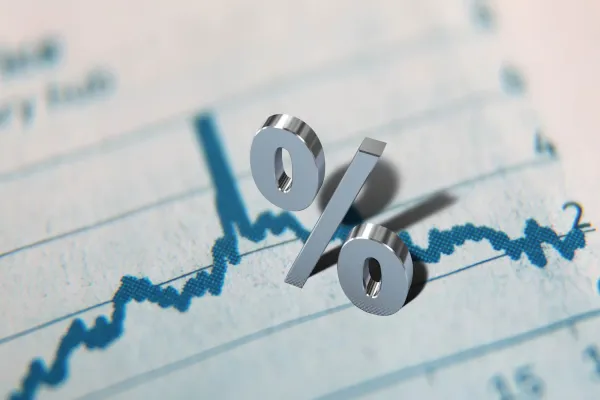The extreme volatility in financial markets since August is painful for investors, though it is not unexpected. In fact, a sell-off was overdue. Overall, the outlook for growth in the developed world continues to be positive. But with market volatility at extreme levels, how do investors remain calm and maintain a long-term perspective?
In late July we at Northern Trust Asset Management released our annual 5-Year Capital Markets Assumption project, in which we enumerate long-term forecasts for economic activity and financial market returns. In this, the 2015 edition of the report, we concluded that slow economic growth would lead to a recalibration of the equity outlook, which the correction has now provided.
History shows that stock market corrections are more severe and more likely to extend into bear markets during recessions. We see not a full-on recession on the horizon but a “slow burn of low growth,” a key theme of our 5-Year Capital Markets Assumption report. U.S. economic growth in the first half of 2015 was 2.2 percent, right in line with the average growth realized since the end of the 2008–’09 financial crisis. We expect durable growth to continue in the U.S., since there are few excesses in the real economy and no inflationary pressure to push the Federal Reserve to raise interest rates faster than market expectations would suggest. As for other developed markets, European growth averaged 1.1 percent in the first half of the year and should continue to benefit from a cyclical upturn in spending following its recession in 2012 and 2013. Japanese growth has been highly volatile and disproportionately affected by slower growth in China and other emerging markets, but we see signs of hope for sustained expansion in recent data.
Speaking of China, the source of most of the market anxiety, we expect policymakers to remain focused on generating growth at the expense of reforms — a long-term setback but one that reduces both social and financial short-term risks.
The late August sell-off in equities supports a second theme in our five-year outlook, “cyclical meets structural.” High valuations are challenged by slow structural expansion. Even after the market rout last month, developed-markets valuations remain relatively high. As of September 1, using MSCI data, U.S. equities were priced at 19 times trailing earnings, down from 20 times as of the end of April but still above the median of 17.4. Similarly, European equities saw price-earnings ratios fall from 19.3 to 17.2, compared with a 14.2 median level. Japanese stocks have seen a decline in valuations from 17.9 to 15.7, well below their bubble-inflated historical levels. Emerging-markets equities fell to 12.3 times earnings, below median levels of 14.5.
Even before the recent extreme volatility, global equity market returns over the past year have aligned with the slow-growth environment. In view of a combination of factors, including debt levels, anticipated deleveraging and transitioning emerging economies, we expect this trend to continue.
Over the past five years through June 30, real growth in developed economies averaged 1.8 percent a year, compared with an annual average of 2.8 percent before the 2008–’09 financial crisis. We expect this tepid growth outlook to continue, with 1.7 percent annual growth over the next five years. We have also trimmed our expectation for emerging-markets growth to 3.8 percent annually, down from 4.5 percent.
Accommodative monetary policy has helped support the cyclical upswing of global developed-markets equity valuations, though this too will be constrained by slackening structural demand. High aggregate debt levels and lopsided aging demographics, in particular, have long been on the horizon but are beginning to come into view.
All in all, investors can take some comfort that the five-year outlook may not be so dire as the current volatility suggests. We forecast a 6.1 percent annual return for developed-markets equities and a related inflation forecast of 1.4 percent. Should these come to pass, the resulting real return of 4.7 percent justifies continued exposure to equities. Well-researched investments in private equity and hedge funds could also add value and efficiency to an overall portfolio.
Jim McDonald is the chief investment strategist, and Daniel Phillips is a co-manager for the Northern Global Tactical Asset Allocation Fund; both at Northern Trust in Chicago.
See Northern Trust Asset Management’s disclaimer.
Get more on equities.






